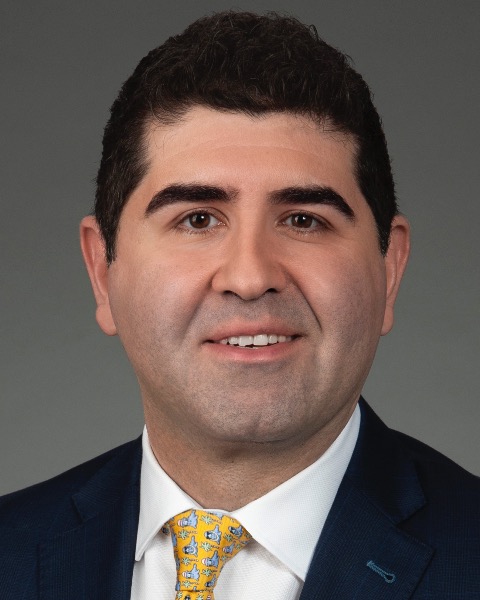Interventional Oncology
Comparative Effectiveness and Safety of Percutaneous Cryoablation and Microwave Ablation for T1a Renal Cell Carcinomas

Alex Villalobos, MD
Assistant Professor
University of North Carolina - Chapel HillDisclosure(s): No financial relationships to disclose
- MX
Minzhi Xing, MD, MPH
Statistician
Emory University Hospital 
Howard H. Dabbous, MD
Research Fellow
Emory University
Lilit Aslanyan, MD
Interventional Radiology Resident
Emory University Hospital- AB
Alexander Bode, MD
Interventional Radiology Resident
Emory University Hospital 
Meghan Lilly, MD
Assistant Professor
Emory University Medical Center
Zachary L. Bercu, MD, RPVI (he/him/his)
Associate Professor
Emory University School of Medicine
Nima Kokabi, MD
Associate Professor of Radiology
University of North Carolina - Chapel Hill
Presenting Author(s)
Author/Co-author(s)
To evaluate differences in efficacy and safety between percutaneous cryoablation (CRA) and microwave ablation (MWA) of T1a renal cell carcinomas (RCC) and examine factors affecting their tumor response.
Materials and Methods:
From 2013 to 2021, consecutive patients with T1a RCC treated with CRA and MWA were retrospectively analyzed. Baseline characteristics, including age, gender, race, body mass index (BMI), tumor size, RENAL nephrometry score and Eastern Cooperative Oncology Group (ECOG) score were evaluated. Peri- and post-procedural variables, including number of probes utilized, total CT dose, procedural time, incidence of hematoma and creatinine adverse-event (AE) grade ≥1, post-op hospitalization, Clavien-Dindo Class ≥1, and complete response (CR) were also evaluated. Logistic regression was used to analyze the effect of the number of probes on CR. Disease-free survival (DFS) from initial treatment was calculated using Kaplan-Meier estimation and compared using log-rank analysis. Differences in baseline variables were assessed with chi-squared and student’s t-test using JMP statistical software.
Results:
182 patients were evaluated (142 CRA; 37 MWA), with median age of 68.4 years, 62.6% male. There were no significant differences in 12 baseline characteristics (age, race, BMI, hypertension, diabetes mellitus, dyslipidemia, dialysis, glomerular filtration rate, tumor size, RENAL nephrometry score, ECOG score and pre-ablation fatigue). Compared to MWA, CRA was associated with more probes (CRA vs. MWA, 2.1±0.9 vs. 1.4±0.5 probes; p< .0001) and longer procedural time (97±3.6 vs. 77±8.4 min; p=0.003), but did not exhibit a significant difference in other peri- or post-procedural variables (total CT dose (3.0±0.3 vs. 3.6±0.3 Gy*cm; p=0.2), hematoma incidence (30% vs. 21%; p=0.1), Grade ≥1 creatinine AE (8% vs. 12%, p=0.1), post-op hospitalization (16% vs. 11%; p=0.1), Clavien-Dindo Class ≥1 (26% vs. 19%; p=0.4), complete response (94.4% vs. 94.5%; p=0.4), and DFS (4.4 vs. 4.2 yrs; p=0.1)). Overall, probability of CR was significantly higher in patients with greater probe-to-tumor size ratio (0.08 vs. 0.07 probe/cm, p=0.003) and probe-to-tumor volume ratio (0.28 vs. 0.19 probe/mL, p=< .0001) than in patients who did not achieve a CR.
Conclusion:
For patients with T1a RCC, CRA and MWA demonstrate similar safety and efficacy profiles despite cryoablation being associated with a greater number of ablation probe utilization and procedural time. Complete response and lack of tumor recurrence was significantly more likely with higher probe-to-tumor size and volume ratios.

.png)
.png)
.jpg)
.jpg)
.png)
.png)
.jpg)
.png)
.png)